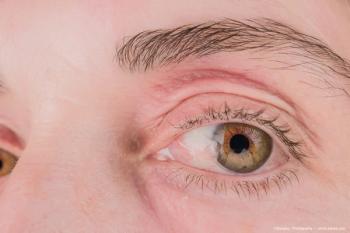
Patient criteria vital to VMA success
Postmarketing clinical experience with ocriplasmin shows treatment success is higher when patients are chosen based on ideal criteria. No safety signals have emerged, but safety is being investigated more closely in ongoing trials.
Take-home message: Postmarketing clinical experience with ocriplasmin shows treatment success is higher when patients are chosen based on ideal criteria. No safety signals have emerged, but safety is being investigated more closely in ongoing trials.
By Cheryl Guttman Krader; Reviewed by David R. Chow, MD
Toronto-
Even so, use of ocriplasmin by American surgeons still lags behind surgery as the preferred method for managing VMA/vitreomacular traction, even in ideal patients.
David R. Chow, MD, noted that pooled data from U.S. centers using ocriplasmin since the product’s commercial release show the treatment success rate (resolution of VMA at day 28 post-injection) is practically doubled compared with the rate achieved in the premarketing pivotal trials (MIVI-TRUST), 50% versus 26.5%, respectively.
The improvement is attributable to the application of pivotal trial findings identifying predictors for response, said Dr. Chow, assistant professor of ophthalmology and vision sciences, University of Toronto, and co-director of the Toronto Retina Institute, Toronto.
“In Canada, ocriplasmin has only been available for 9 months, and so far, more than 200 treatments have been done,” he said. “We are reviewing the outcomes for a later presentation, but anecdotally, the results are very good as well with adherence to the ideal patient criteria for case selection.”
Factors associated with improved response are focal VMA (<1,500 µm), macular hole <250 µm (if present with VMT), absence of an epiretinal membrane, phakic status, and age <65 years.
Reviewing safety experience, Dr. Chow noted that in the ocriplasmin pivotal trials, cases of acute reduction of visual acuity, electroretinogram (ERG) changes, dyschromatopsia, and lens subluxation generated concern. However, a recent review of more than 10,700 eyes treated postmarketing shows the frequency of these events is lower than in the pivotal trials.
Ongoing trials study safety
Safety is being studied more thoroughly in ongoing trials, including a phase IV registry-based study known as ORBIT that is gathering data on real-world experience and the side effect profile of ocriplasmin. It aims to enroll 1,500 patients at 120 clinical sites in the United States.
Other ongoing trials include OASIS, which includes a substudy of ERG and microperimetry data, and OZONE, which is evaluating ellipsoid zone changes by day 21 as its primary outcome.
Information on utilization of ocriplasmin in the United States comes from findings of the 2014 American Society of Retina Specialists practice and trends survey:
- When asked: “How do you manage a patient with a stage 2 macular hole with concurrent traction?” 75% of surgeons said they would choose surgery and only 14.5% said ocriplasmin.
- When asked: “How is a patient with a symptomatic focal vitreomacular traction and visual acuity of 20/60 best managed?” 26% of U.S. surgeons said ocriplasmin, while 62% chose surgery.
David R. Chow, MD
This article was adapted from Dr. Chow’s presentation at the 2014 meeting of the American Academy of Ophthalmology. Dr. Chow is a consultant for Alcon Laboratories, which is the distributor of ocriplasmin in Canada.
Newsletter
Don’t miss out—get Ophthalmology Times updates on the latest clinical advancements and expert interviews, straight to your inbox.













































.png)


